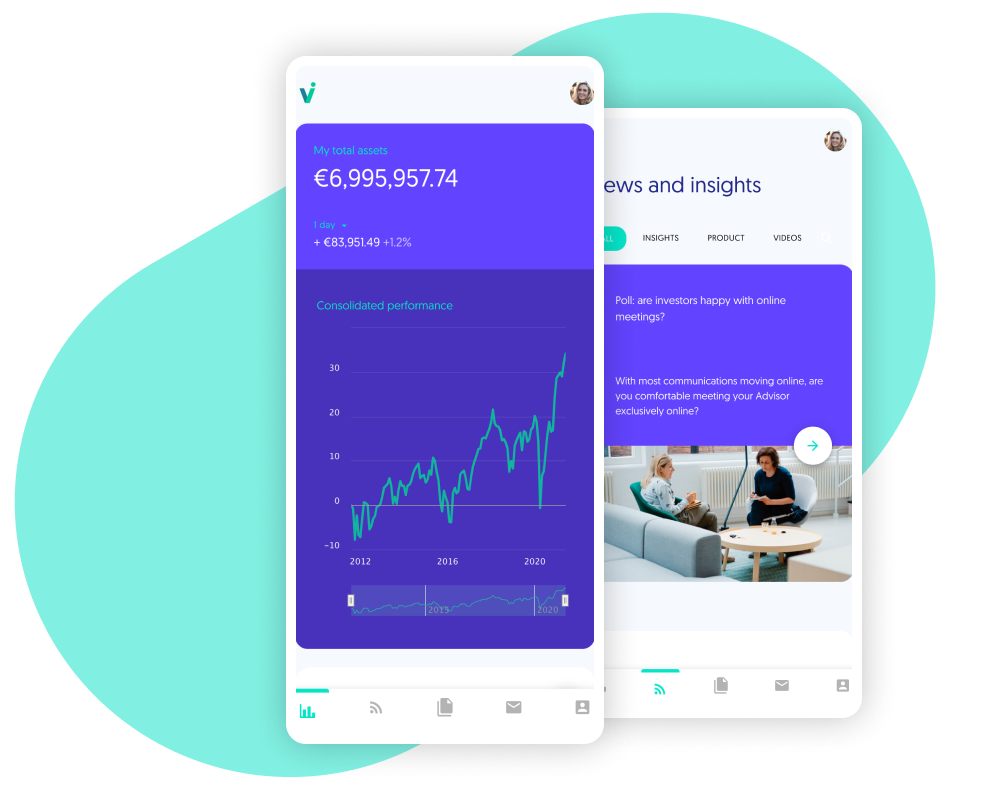In the final part of our interview with the Wealth Mosaic, our CEO discusses the issues that Invessed is designed to address

I recently recorded a video with Stephen Wall from Wealth Mosaic. In preparation, I put together some notes that didn't quite make it whilst I was (literally) on the spotlight. Here they are, for posterity and your reading pleasure.
Having touched on the purpose and history of the company and the Solution offering, Part 3 moves to a broader discussion of the challenges that the industry is facing.
1. Why is Behavioural Data important to a Wealth Manager?
Understanding the needs of your audience is the starting point of all digital efforts. There are a number of ways to get to these insights – ranging from focus groups and market research, to persona development and voice-of-customer and NPS-type measurements.
However, all these contain an element of bias – clients will answer the question posed to them, and the way that we phrase that question frames their answer. For example, most WMs use a questionnaire to assess a client’s risk profile but there is a big gap between what people say they would do if their portfolio went down by 10%, and what they actually do.
Behavioral data tracks a clients’ journey through their interactions with the WM. It includes clicks, swipes, lingering time – everything – and can be correlated with movements in the market and portfolio value. Behavioral Data is unbiased and so provide valuable insights which can help WMs optimize customer service through personalized, proactive recommendations.
In the example above, when their portfolio loses 10% of its value, an Adviser might notice a spike in activity – an indication of stress or panic – and be able to proactively contact the client, take remedial action and protect the relationship.
2. What is Data under Management, and why is it important?
We came up with the term Data under Management to challenge the dominance of Assets under Management as the traditional measure of success for investment brands.
At its heart, digital transformation is about delivering customer value through data and software. Software is just a means to extract value out of data, so WMs need to focus on collecting data on everything. Online, offline, financial, behavioural – everything.
Quantity matters, and so does quality. Data also needs to be protected, grown, organized and put to work – just like Assets. Applying the lessons from the rise of the tech giants, it is conceivable that a WM’s DuM could soon become a greater indicator of value created than AuM.
3. Why is the industry tired of innovation, and how can firms re-engage?
WMs are indeed facing some headwinds that can get in the way of innovation. There are budget pressures, management buy-in, and changing regulation that takes up a lot of brain space.
Also, the routes to innovation are a bit unclear. Expectations on things like VR, Blockchain and AI have not quite delivered tangible, easy-to-grasp benefits, and firms are understandably reluctant to jump in.
Innovations like VR, Blockchain and AI have not quite delivered tangible benefits and firms are reluctant to jump in.
Having said that, innovation remains a key driver of differentiation, so we advise WMs to at least position themselves to take advantage of developments, if not jump in head-first.
Practically that means collecting data from everywhere (the raw material of AI) and encouraging agile practices and a culture of curiosity across the organisation.
4. What is the value of improved Customer Experience?
An old industry saying has it that “performance attracts assets; service retains them”. Put another way, teams may not be able to influence market movement, but they can drive improvements in a customer’s experience.
Many of our clients describe CX as an amplifier. Suppose a client is seeing a drop in performance. Negative experience reinforces a feeling of overall incompetence and make them head for the door. Positive experience on the other hand will make them more forgiving, and open to suggestions of remedial action. If performance goes up, a good CX turns them into advocates, encouraging referrals to their network.
When we go through a CX process, we map out all the touch-points that a client will go through, from initial contact, to on-boarding and account management. Technology plays a key part in optimizing this process, as it’s the only way to create a “joined up” seamless experience that can fosters long-term trust.


